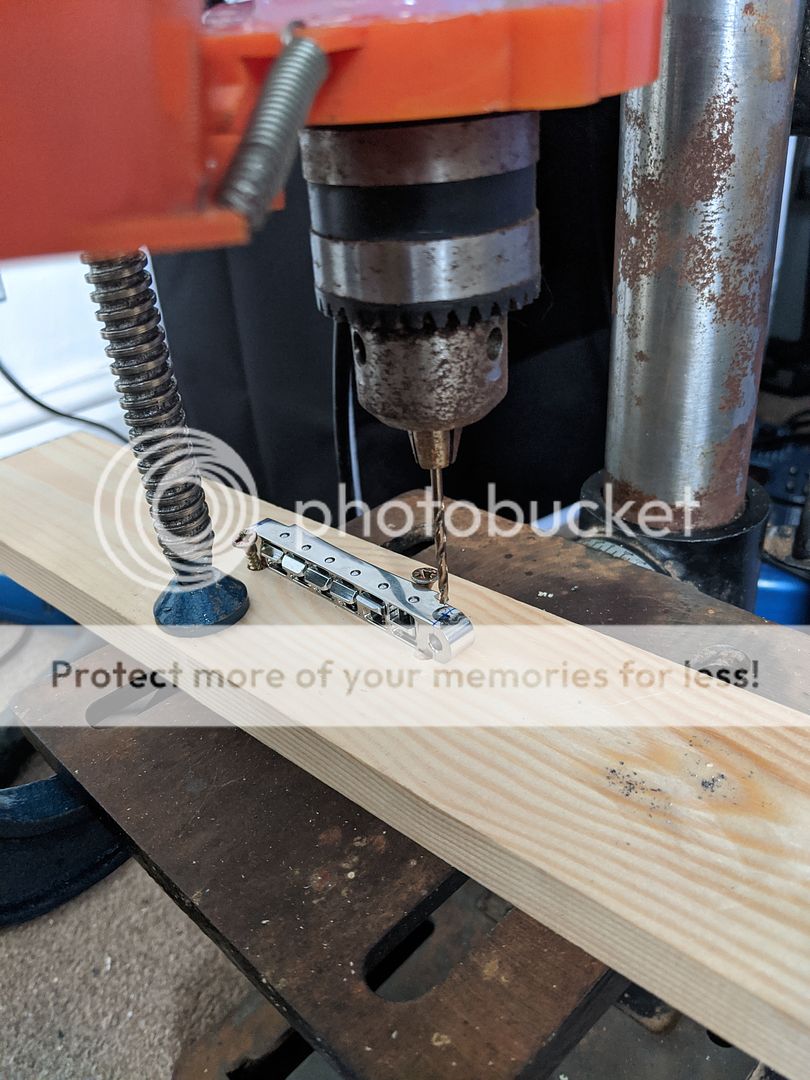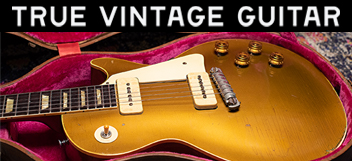Paladin2019
New member
- Joined
- Jan 20, 2004
- Messages
- 203
I was recently torn between buying a Callaham steel abr1 bridge or an ABM steel bridge for half the price. For me the only advantage to the Callaham was the locking screws so I got the ABM (if anyone is interested I could review it, there's not much talk about this company even though they are at the upper end of the market). I knew I would miss the locking feature so I added it myself.
I was surprised to find that this is not something discussed very much online even though it was a pretty simple procedure and adds a feature that a lot of people would consider desirable. Maybe it's just that there are lots of good youtube metalworking videos for each of the steps and anyone who has the confidence to do it wouldn't need a guitar-specific step-by-step. Well, I'm feeling pretty happy that even with my modest DIY skills I managed to make it work so I'm showing it off!

First I jigged up on a borrowed drill press. I used a slow speed, plenty of 3-in-1 oil and lots of downward pressure to get through the steel. In hindsight I would probably also cover the area in masking tape for a bit of extra protection for the plating. I used a 2.5mm drill bit.
I tapped the thread with an M3 tap and a cheap T-bar tapping tool I picked up on ebay, plus lots of oil.
With the holes prepped I screwed in the grub screws. M3, 4mm length, flat bottom. The same spec as used in a Tone Pros bridge.
Et voila!

I was surprised to find that this is not something discussed very much online even though it was a pretty simple procedure and adds a feature that a lot of people would consider desirable. Maybe it's just that there are lots of good youtube metalworking videos for each of the steps and anyone who has the confidence to do it wouldn't need a guitar-specific step-by-step. Well, I'm feeling pretty happy that even with my modest DIY skills I managed to make it work so I'm showing it off!

First I jigged up on a borrowed drill press. I used a slow speed, plenty of 3-in-1 oil and lots of downward pressure to get through the steel. In hindsight I would probably also cover the area in masking tape for a bit of extra protection for the plating. I used a 2.5mm drill bit.
I tapped the thread with an M3 tap and a cheap T-bar tapping tool I picked up on ebay, plus lots of oil.
With the holes prepped I screwed in the grub screws. M3, 4mm length, flat bottom. The same spec as used in a Tone Pros bridge.
Et voila!




